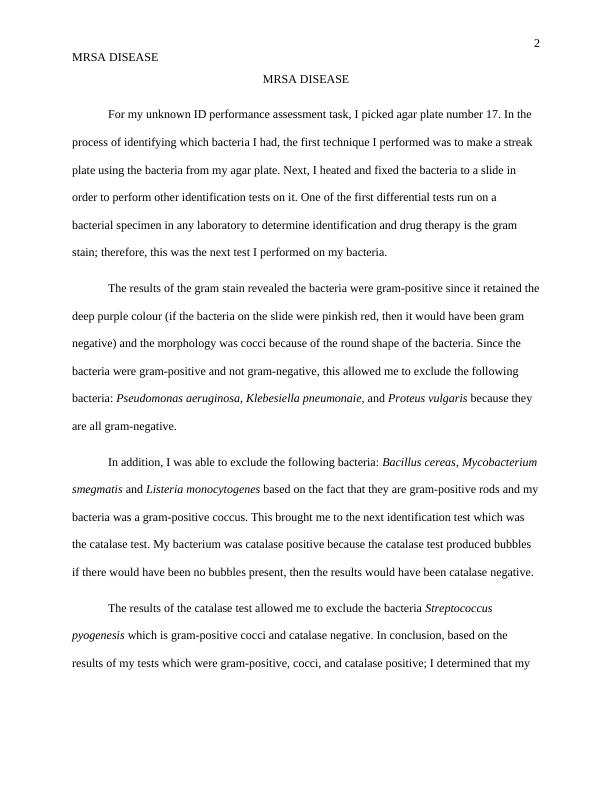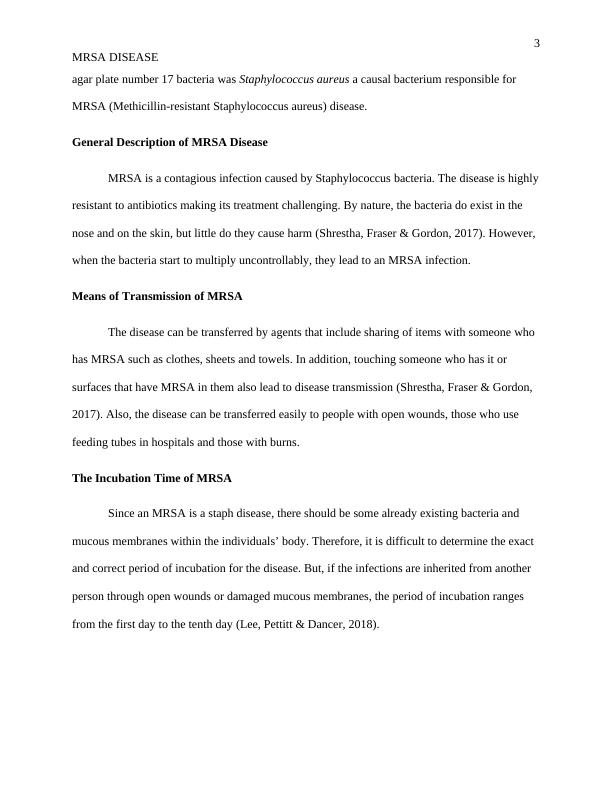MRSA Disease: Symptoms, Pathogenicity, Diagnosis, Treatment and Prevention
Identify an unknown bacteria using laboratory techniques and write a paper summarizing the process and describing a related disease.
8 Pages1708 Words285 Views
Added on 2023-05-28
About This Document
MRSA is a contagious infection caused by Staphylococcus bacteria. Learn about its symptoms, pathogenicity, diagnosis, treatment and prevention. Understand the means of transmission, incubation time, and epidemiology of MRSA. Get insights into the diagnosis, treatment and prevention of MRSA.
MRSA Disease: Symptoms, Pathogenicity, Diagnosis, Treatment and Prevention
Identify an unknown bacteria using laboratory techniques and write a paper summarizing the process and describing a related disease.
Added on 2023-05-28
ShareRelated Documents
End of preview
Want to access all the pages? Upload your documents or become a member.
Treatment of Clinical Signs and Symptoms through Identification and Isolation Mechanism of Suspected Bacteria
|8
|1912
|51
Isolation and Characterization of Unknown Bacteria B Using Morphological and Biochemical Tests
|6
|2023
|228
Presence of Pathogenic Bacteria in Raw Meat Dog Food
|5
|1337
|56



